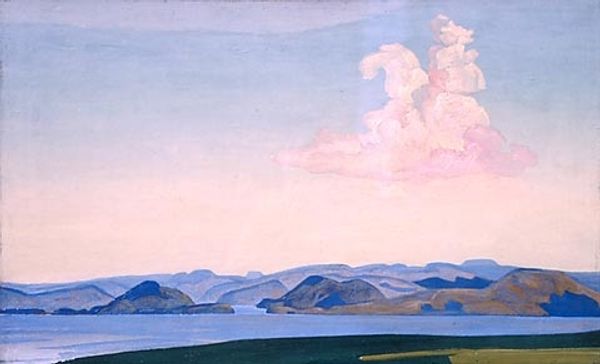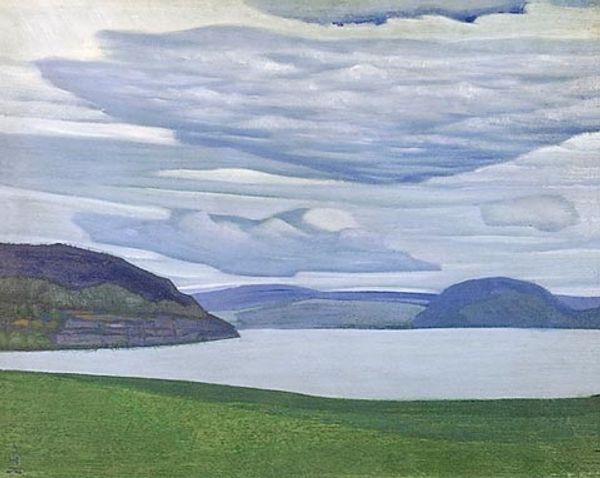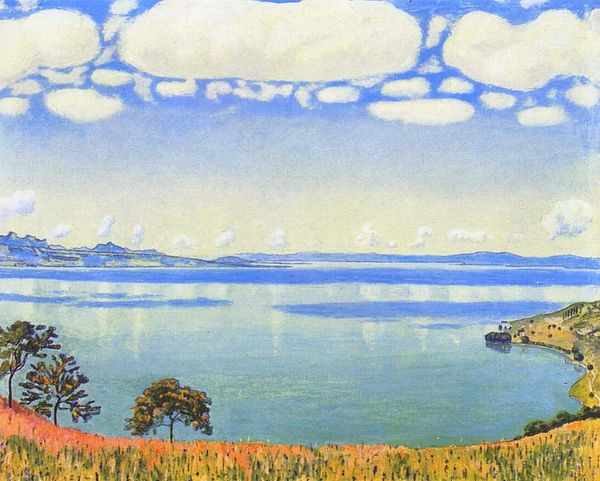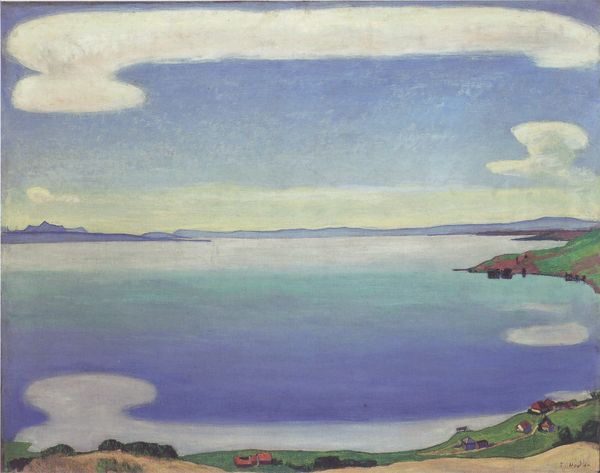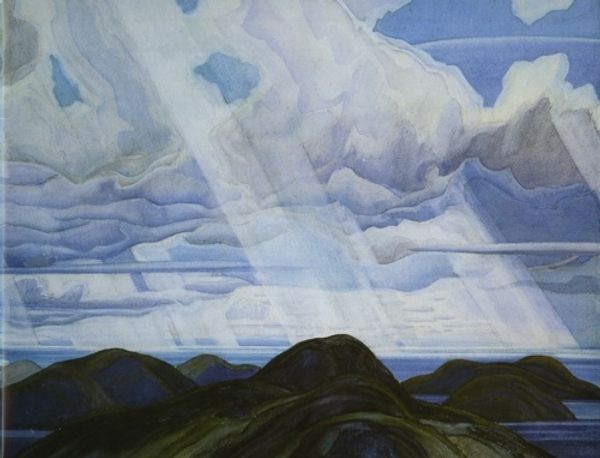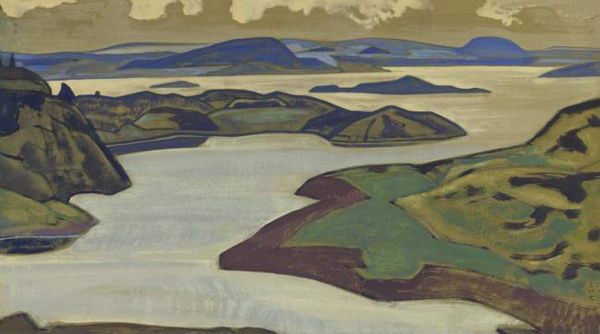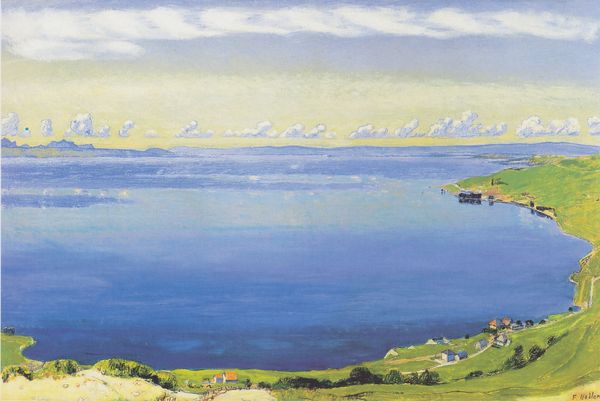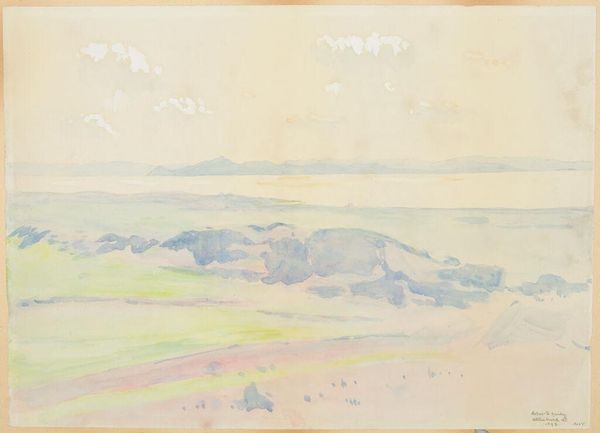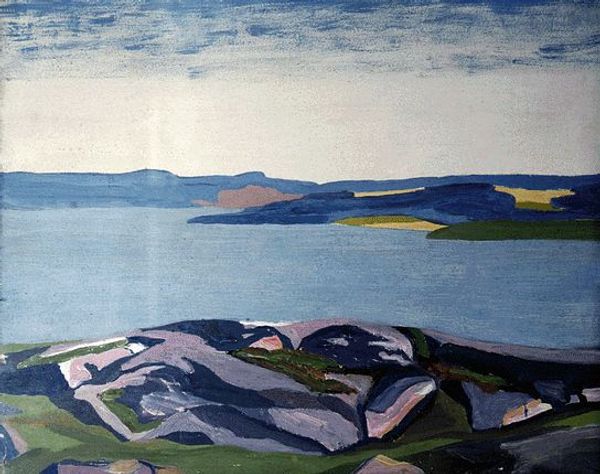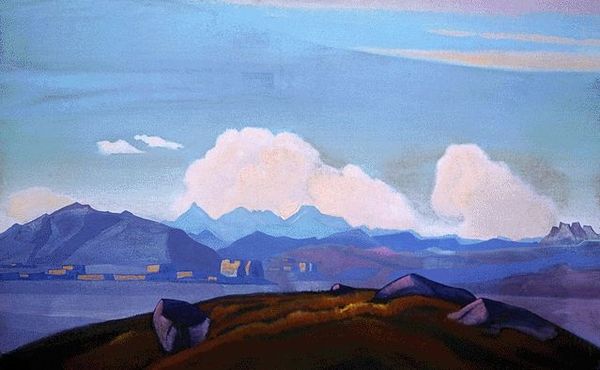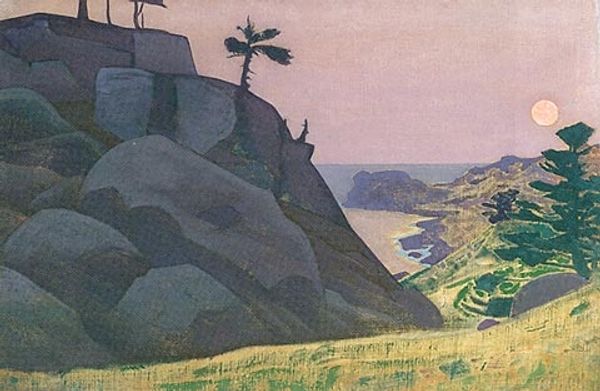
Copyright: Public domain
Editor: We are looking at "Karelia", an oil painting from 1918 by Nicholas Roerich. There's something very serene about the landscape, the cool blues and greens are calming. How do you interpret this work? Curator: It's interesting you find it serene. I see Roerich’s "Karelia" less as a peaceful landscape and more as a powerful statement on national identity during a tumultuous period. Consider the date – 1918. World War I was ending, and the Russian Revolution was underway. Karelia, a region contested between Russia and Finland, was seeking autonomy. Editor: So, you're saying it’s more than just a pretty landscape? Curator: Exactly! Roerich, deeply invested in his Russian identity and heavily influenced by the symbolist movement, likely used the landscape to evoke a sense of national belonging and perhaps even a call for the recognition of Karelian self-determination. Do you notice how the land and sky dominate, dwarfing any signs of human presence? Editor: I do. It emphasizes the vastness of the land... almost like a character itself. Curator: Precisely. Roerich uses the romanticism inherent in landscape painting to elevate the land to a symbol. This reading positions the work within a broader context of art serving nationalist agendas. Does this contextual information shift your understanding of its "serenity?" Editor: It does! Knowing the historical context completely changes how I see those cool colours. They’re not just calming; they represent a people's deep connection to their land and a longing for independence. Thanks for pointing that out. Curator: My pleasure! Hopefully it provides a valuable lesson on the importance of artworks existing within cultural contexts and impacting societal perspective.
Comments
No comments
Be the first to comment and join the conversation on the ultimate creative platform.
